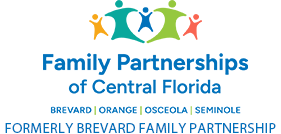Summer is nearing conclusion and Brevard’s children have now returned to school. For many, this is an exciting time to reconnect with friends, meet their new teachers and to learn and grow. For others, however, returning to school may not be such a positive experience.
According to the Anxiety and Depression Association of America, anxiety affects 1 in 8 children and “Anxiety is a normal part of childhood, and every child goes through phases. A phase is temporary and usually harmless. But children who suffer from an anxiety disorder experience fear, nervousness, and shyness, and they start to avoid places and activities.” ((https://www.adaa.org/living-with-anxiety/children))
Left unaddressed, what may be a normal part of childhood, can spiral downward into school avoidant behavior over time. Bullying and fear, undiagnosed learning disabilities and anxiety disorders may be the causes of aversion to school attendance. For this reason, it is important for caregivers to explore the source of avoidant behaviors and school related distress, rather than to solely focus on the presenting issue.
As the parent of an adult daughter on the autism spectrum, I am well acquainted with the distress a child can experience when they learn differently and struggle to fit in. Compound that today with social media influences and what used to be exclusively school related stress now may cross over into a child’s personal life.
As an adult, my daughter often reflects on the impact her childhood experiences had upon her. I’d like to share some of her insights with you.
- Attending school was stressful given that she felt stigmatized being in a special education program and taken out of class for remediation.
- She was fully cognizant that at times, classroom teachers became frustrated by having special education students integrated in their classroom.
- When assigned group activities with typically developing peers, the rejection she experienced when they did not want her on their team or in their group, adversely impacted her sense of self-esteem and sense of competency.
- When an undesirable peer group is the only group that embraces a child who is struggling to belong, in order to feel safe and a sense of belonging, a vulnerable child or youth will typically respond favorably to the overtures of anyone willing to embrace and include them.
- She was often misunderstood and wrongly labeled compounding the problems she faced. To illustrate this point, one day I recall being contacted by the school, who informed me that my daughter had been arriving late to her classes, often ill prepared and leaving early, and was told this pattern was becoming disruptive. After meeting with the school principal, it became apparent to me that there was more going on than met the eye; my daughter was shy and timid and this appeared to be out of character for her. I retained a school consultant to observe her for one week and report the findings to me. What was uncovered was a surprise to all. After observing my daughter frequenting her locker, but oft times leaving without opening it, it became apparent that she didn’t know how to open her locker; rather than disclose this to anyone as not to appear stupid, she would casually wander to her locker between classes in hope that her locker mate was present so she could retrieve her books. Additionally, rather than taking the shortest route to the next class, it was evident that she only knew one route, and that was from the locker. Consequently, at times she would arrive late to class and without her books; when the teacher commented on her tardiness and not having her books, she would become upset and the special education teacher would take her out of the class to comfort and redirect her. Like many children, my daughter was misunderstood and incorrectly labeled; had I not intervened to get to the root of the problem, the misperception of the situation could have become compounded over time.
Children and youth who learn differently and are academically challenged, are at risk of stigma and bullying by peers, and more concerning, children with undiagnosed learning disabilities often become labeled as having behavior problems and conduct disorders, which in essence mask the underlying issue of an undiagnosed learning disability.
Research indicates that children who present with differences are more prone to bullying, which may compound their desire to attend school. In addition, children who are bullied may act out in an attempt to fit in and to be accepted by a peer group.
Awareness of the impact of Bullying has increased greatly over the past decade as research has revealed bullying may result in violence and suicidal ideation. According to the National Center on Health Research (NCHR), “In 2013, the Youth Risk Behavior Surveillance System surveyed 13,583 high school (grades 9-12) students and found that, “ 20% of students nationwide experienced bullying, and 15% of students have been electronically (cyber) bullied. ((http://center4research.org/violence-risky-behavior/z-other-violence/bullying-and-violence/))
The NCHR also reports the following signs a child may be experiencing bullying:
- Depression
- Anxiety
- Feelings of loneliness
- Loss of interest in activities a child used to enjoy
- Changes in eating and sleeping patterns
- Lowered GPA or standardized test scores
- Lack of school participation
- High rates of absences/dropping out of school
If your child struggles at school and shows signs of school avoidant behavior seek assistance and support to pave the way for their future academic success. For more information please visit:
https://www.adaa.org/living-with-anxiety/children/school-refusal
http://www.stopbullying.gov/kids/facts/
http://www.ldonline.org/
Sincerely,
Dr. Patricia Nellius








